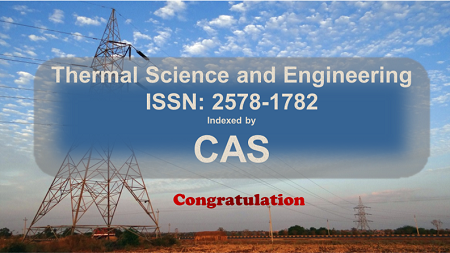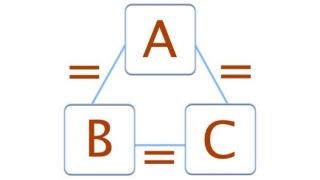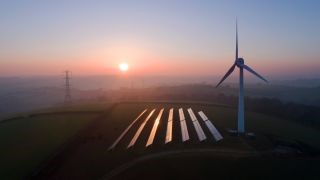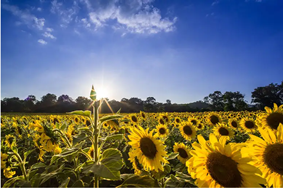Volume 8, Issue 2 articles now available online! |
|
Volume 8, Issue 2 of this journal highlights significant advancements in the integrated application of thermodynamics, artificial intelligence, and advanced materials in the field of sustainable energy. Some featured findings include machine learning programs for electrolyzers, enabling efficient hydrogen production; ultra-high-efficiency vacuum insulated panels suitable for containers; and metal iodides and their applications in medical technologies. Additionally, a critical thermodynamic analysis quantifies the impact of trace gases on the storage of heat in the atmosphere of the Earth. These studies collectively drive innovation toward reducing the energy footprint. More details, please read Volume 8 Issue 2. |
|
| Posted: 2025-08-11 | More... |
Volume 8, Issue 1 articles now available online! |
|
Volume 8 Issue 1 presents innovative studies involving thermal properties analysis for phase change materials, solar-powered absorption refrigeration system, thermal management strategies and optimization of heat systems using numerical analysis methods. The issue also includes a comprehensive review on the role of nanomaterials in the manufacturing of micro and macro scale devices. These studies offer valuable insights to advance sustainable thermal energy technologies and thermal system design. The works in this issue are vital to develop critical solutions for engineering challenges in thermal systems. More details, please read Volume 8 Issue 1. |
|
| Posted: 2025-03-31 | More... |
Congratulations to Prof. Qingsong Wang on Receiving the 2024 Highly Cited Award from Clarivate Analytics |
|
 |
|
| Posted: 2024-12-18 | More... |
Research News: A review of Thermal effects of electromagnetic origin from heating processes to biological disturbances due to field exposure |
|
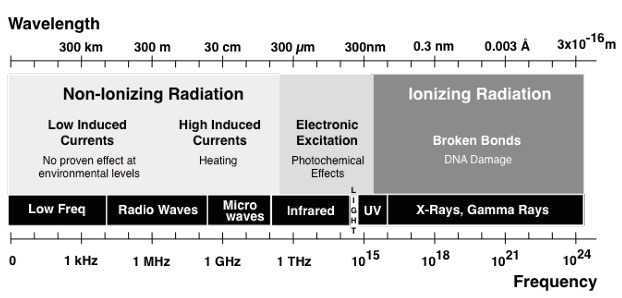 |
|
| Posted: 2024-08-05 | More... |
New Editorial Board! |
|
The TSE's editorial team has recently undergone a reorganization and is pleased to introduce a new editorial board team. This team includes one editor-in-chief, two associate editors, and 48 editorial board members. The new editorial board will guide the editorial team in advancing the journal's success in the future. |
|
| Posted: 2024-07-01 | |
Notice of Policy Update! |
|
Over the last six years, the journal has grown significantly in all respects. The journal office, which is continually striving to improve the editorial process, has updated the appropriate editorial and publishing policies. Thermal Science and Engineering (TSE) requests that all individuals, including writers, readers, editors, and reviewers, read them carefully and thoroughly. |
|
| Posted: 2024-05-13 | |
Notice of change in Publication Frequency! |
|
Grateful for the invaluable assistance and unwavering support from our editors, authors, reviewers, and the scholarly community of Thermal Science and Engineering (TSE), we are pleased to announce that after six years of growth and establishing a solid readership and authorship base, TSE will transition to a quarterly publication schedule. This means that from 2024 onwards, we will release four issues annually in March, June, September, and December. We cordially invite our readers and authors to stay tuned for this exciting development. |
|
| Posted: 2024-04-07 | |
New Author Guidelines are updated! |
|
Before submitting to our online submission system, please carefully check that your manuscript has been prepared in accordance with the step-by-step instructions. The guide and the EnPress Manuscript Submission Template are updated and prepared specifically for those who are going to contribute or edit the manuscripts to be published in Thermal Science and Engineering since 2024 Volume 7 Issue 1. |
|
| Posted: 2024-01-05 | |
[Congratulations] 2023 Volume 6, Issue 1 is now available online-Latest Published Articles Read |
|
We are pleased to announce that 2023 Volume 6, Issue 1 is published online, please click here for more details.
|
|
| Posted: 2023-08-07 | |
New Author Guidelines are updated |
|
Please follow the journal's author guideline and the required article template to prepare your manuscript. |
|
| Posted: 2023-07-06 | More... |
TSE has been included in the CAS databases! |
|
We are glad to announce that Thermal Science and Engineering (TSE) has been included in the CAS databases!
|
|
| Posted: 2023-04-14 | |
The “Conflict of Interest” policy |
|
For the sake of academic fairness, all authors are required to declare all activities that have the potential to be deemed as a source of competing interest in relations to their submitted manuscript. Examples of such activities could include personal or work-related relationships, events, etc. Authors who have nothing to declare are encouraged to add "The authors declare that there is no conflict of interest" in this section. A declaration of interests for all authors should be received before an article can be reviewed and accepted for the publication. As the authors, editors or reviewers, they also are required to declare the conflict of interest in academy.
Editorial Office |
|
| Posted: 2022-08-12 | More... |
Research News: What is the zeroth law of thermodynamics? |
|
By Jim Lucas Contributions from Ashley Hamer published February 02, 2022
Figure1:The zeroth law of thermodynamics (Image credit: Tim Sharp)
|
|
| Posted: 2022-03-01 | More... |
Thermal dynamics and electronic temperature waves in layered correlated materials |
|
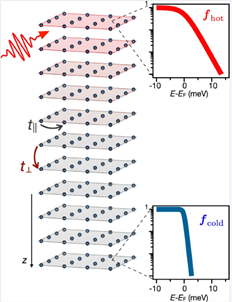 Figure 1. Setup.Cartoon of the layered correlated material impulsively excited on the top surface by ultrafast light pulses. We assume that the excitation drives a fast thermalization of the electronic population establishing an electronic temperature Thot on the topmost layers of the sample. |
|
| Posted: 2021-12-08 | More... |
Volume 4, Issue 1 of TSE is now live! |
|
We are pleased to announce that the Vol. 4, No. 1 for 2021 of Thermal Science and Engineering is live now. Please access the full issue for more details. |
|
| Posted: 2021-07-30 | More... |
Is renewable energy cheaper or more expensive than traditional forms of energy? |
|
Renewable energy harnesses the wind's strength and sun's heat to generate electricity. (Image credit: Peter Cade/Getty Images) |
|
| Posted: 2021-02-10 | More... |
Volume 3, Issue 2 of TSE is now live! |
|
We are pleased to announce that the Vol. 3, No. 2 for 2020 of Thermal Science and Engineering has been live. Please access the full issue for more details. |
|
| Posted: 2021-01-08 | More... |
Meet one of our Associate Editors |
|
Prof. Nuo Yang School of Energy and Power Engineering, Huazhong University of Science and Technology (HUST) ORCID 0000-0003-0973-1718 |
|
| Posted: 2020-08-28 | More... |
Research News: Thermodynamics of continuous non-Markovian feedback control |
|
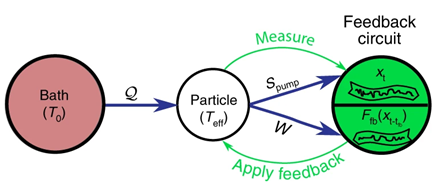 Figure 1. Non-Markovian delayed feedback control. |
|
| Posted: 2020-03-19 | More... |
Research News: Tiny artificial sunflowers could be used to harvest solar energy |
|
Figure 1. Sunflower have inspired a device that can harvest solar energy @ Sorajack Mongkolsri / Alamy Stock Photo |
|
| Posted: 2019-11-19 | More... |
Publishing frequency of TSE is Semi-annual! |
|
The publication frequency of Thermal Science and Engineering (TSE) is semi-annual. All articles that have been accepted will be online in time without delay. We welcome the high-quality original articles significant in all disciplines of thermal energy transport, thermodynamics, thermal medical systems, and devices, etc. |
|
| Posted: 2019-05-08 | More... |
Call for papers |
|
Aims & Scope Thermal Science and Engineering (TSE) is an international open access journal that publishes high-quality articles that span activities ranging from fundamental thermodynamic scientific research to the applied discussion of maximising thermodynamic efficiencies and minimising all heat losses. Topics cover thermal biology, nanotechnology, thermal energy transport, thermodynamics, thermal medical systems, and devices, etc. |
|
| Posted: 2019-02-19 | More... |
Research News: Large wind and solar farms in the Sahara would increase heat, rain, vegetation |
|
Wind and solar farms are known to have local effects on heat, humidity and other factors that may be beneficial -- or detrimental -- to the regions in which they are situated. A new climate-modeling study finds that a massive wind and solar installation in the Sahara Desert and neighboring Sahel would increase local temperature, precipitation and vegetation. Overall, the researchers report, the effects would likely benefit the region. The study, reported in the journal Science, is among the first to model the climate effects of wind and solar installations while taking into account how vegetation responds to changes in heat and precipitation, said lead author Yan Li, a postdoctoral researcher in natural resources and environmental sciences at the University of Illinois. |
|
| Posted: 2018-09-12 | |
Research News: A new way to remove ice buildup without power or chemicals |
|
From airplane wings to overhead powerlines to the giant blades of wind turbines, a buildup of ice can cause problems ranging from impaired performance all the way to catastrophic failure. But preventing that buildup usually requires energy-intensive heating systems or chemical sprays that are environmentally harmful. Now, MIT researchers have developed a completely passive, solar-powered way of combating ice buildup. The system is remarkably simple, based on a three-layered material that can be applied or even sprayed onto the surfaces to be treated. It collects solar radiation, converts it to heat, and spreads that heat around so that the melting is not just confined to the areas exposed directly to the sunlight. And, once applied, it requires no further action or power source. It can even do its de-icing work at night, using artificial lighting. |
|
| Posted: 2018-09-12 | |
Research News: Could a 'demon' help create a quantum computer? |
|
Reduced entropy in a three-dimensional lattice of super-cooled, laser-trapped atoms could help speed progress toward creating quantum computers. A team of researchers at Penn State can rearrange a randomly distributed array of atoms into neatly organized blocks, thus performing the function of a "Maxwell's demon" -- a thought experiment from the 1870s that challenged the second law of thermodynamics. The organized blocks of atoms could form the basis for a quantum computer that uses uncharged atoms to encode data and perform calculations. A paper describing the research appears September 6, 2018 in the journal Nature. "Traditional computers use transistors to encode data as bits that can be in one of two states -- zero or one," said David Weiss, professor of physics at Penn State and the leader of the research team. "We are devising quantum computers that use atoms as 'quantum bits' or 'qubits' that can encode data based on quantum mechanical phenomena that allow them to be in multiple states simultaneously. Organizing the atoms into a packed 3D grid allows us to fit a lot of atoms into a small area and makes computation easier and more efficient." |
|
| Posted: 2018-09-12 | |
| 1 - 25 of 25 Items | |




